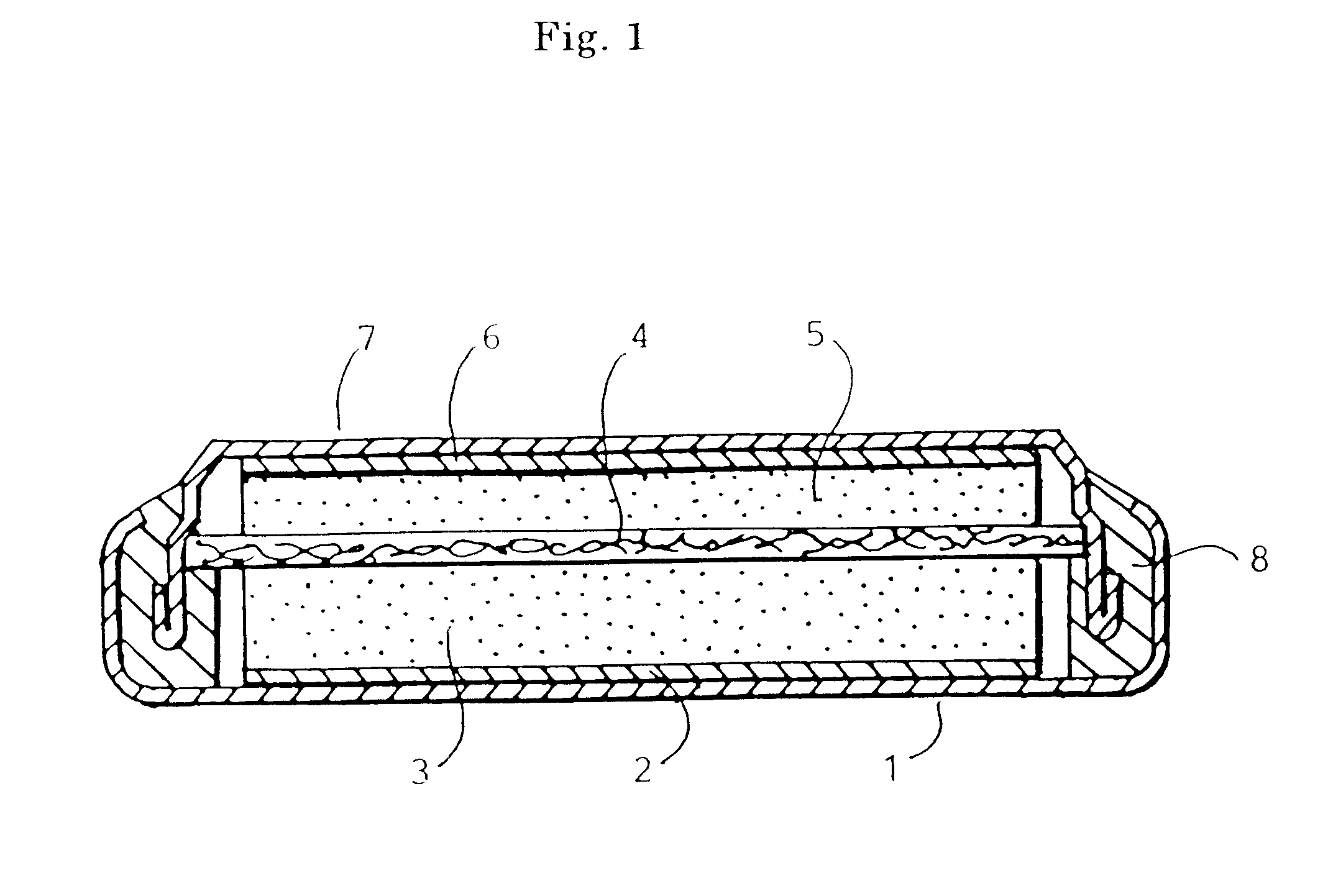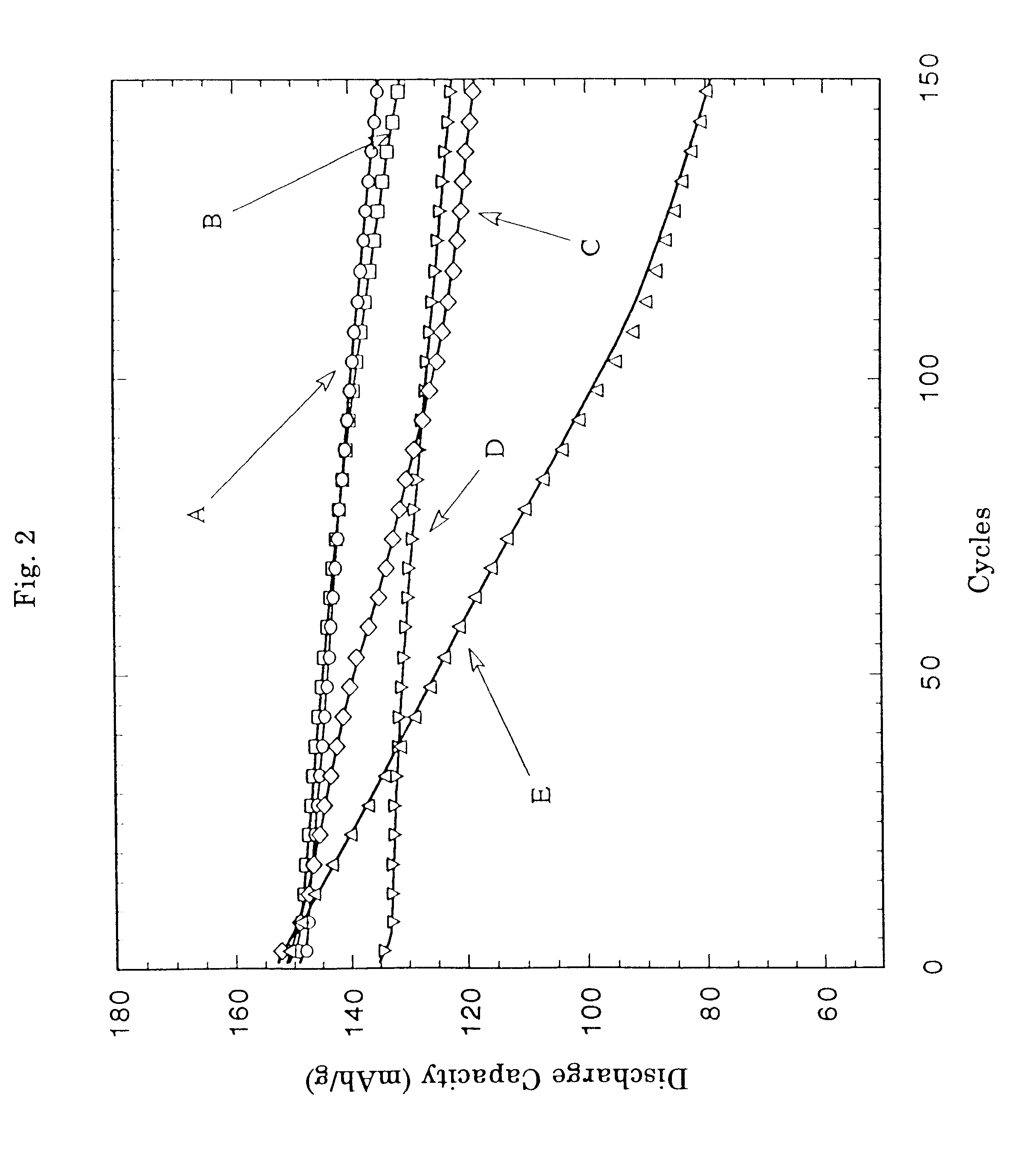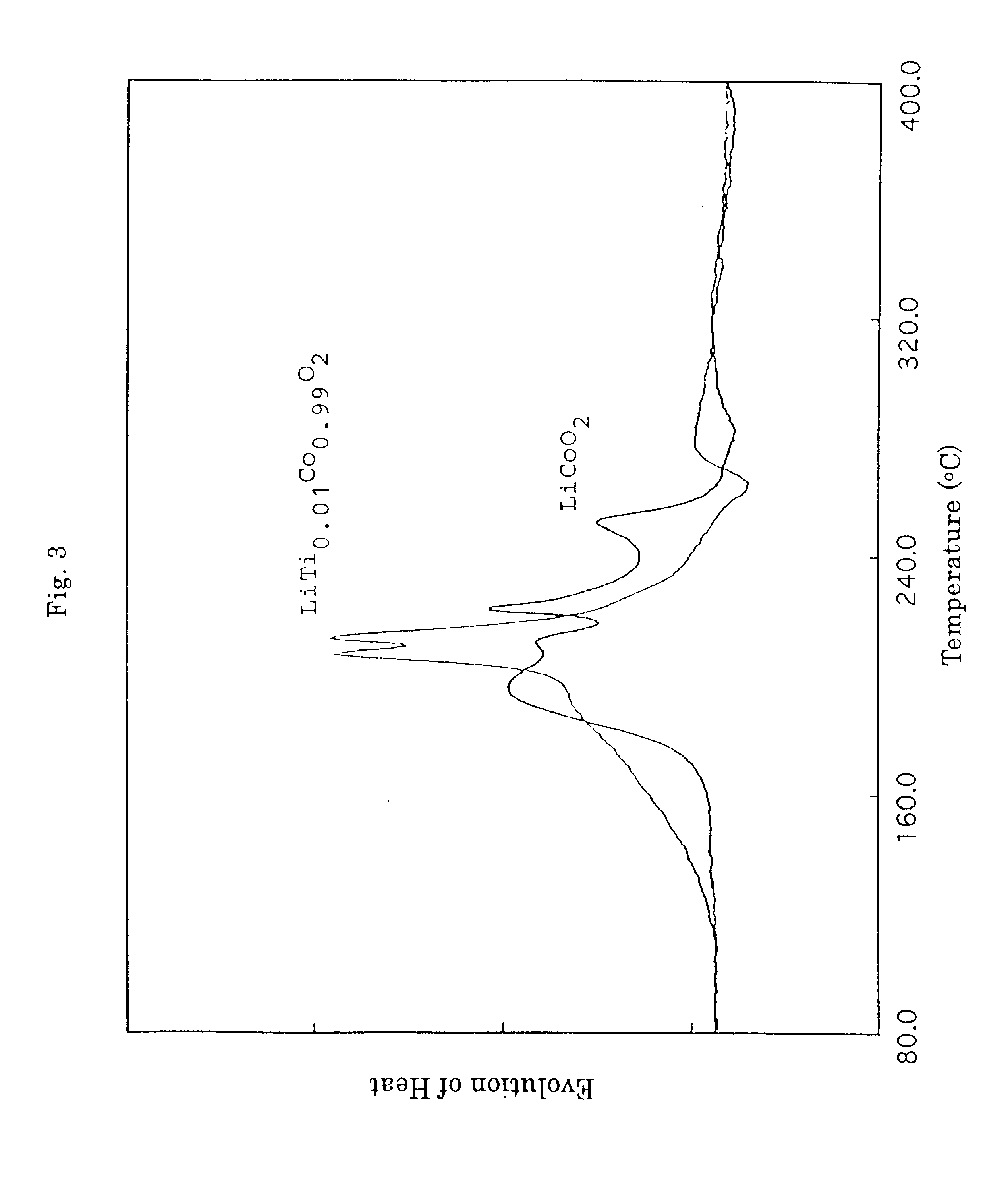Lithium ion secondary battery, cathode active material therefor and production thereof
a secondary battery and lithium ion technology, applied in the field of lithium ion secondary batteries, cathode active materials therefor and production thereof, can solve the problems of battery breakage, rapid deterioration of characteristics, and no satisfactory cycle performance of batteries
- Summary
- Abstract
- Description
- Claims
- Application Information
AI Technical Summary
Problems solved by technology
Method used
Image
Examples
example 1
Lithium carbonate (Li.sub.2 CO.sub.3), cobalt oxide (Co.sub.3 O.sub.4) and titanium dioxide (TiO.sub.2) were mixed in a Li / (Co+Ti) molar ratio of 1.0 and a Ti / (Co+Ti) molar ratio (=y) of 0, 0.005, 0.01, 0.03 or 0.10 in methanol and the resulting mixture was stirred to provide a paste. The paste was heated and dried, and then fired under an air atmosphere at a temperature of 900.degree. C. for three hours with an electric furnace thereby providing titanium-substituted lithium cobalt composite oxide, LiTi.sub.y Co.sub.1-y O.sub.2.
Eighty five parts by weight of the titanium-substituted lithium cobalt composite oxide were mixed with 10 parts by weight of graphite (electrically conductive material) and 5 parts by weight of polytetrafluoroethylene (binder) to provide a mixture. The mixture was molded under pressure to provide a disk-like cathode. A disk-like lithium metal was used as an anode. An electrolytic solution was prepared by dissolving lithium hexafluorophosphate (LiPF.sub.6) in ...
example 2
Lithium carbonate (Li.sub.2 CO.sub.3), cobalt oxide (Co.sub.3 O.sub.4) and manganese acetate ((CH.sub.3 COO).sub.2 Mn) were mixed in a Li / (Co+Mn) molar ratio of 1.0 and a Mn / (Co+Mn) molar ratio (=y) of 0.01 in methanol and the resulting mixture was stirred to provide a paste. The paste was heated and dried, and then fired under an air atmosphere at a temperature of 900.degree. C. for three hours with an electric furnace thereby providing manganese-substituted lithium cobalt composite oxide, LiMn.sub.0.01 Co.sub.0.99 O.sub.2.
In the same manner as above except that aluminum oxide, molybdenum oxide or stannic oxide was used in place of manganese acetate in an amount of 1 mol % based on cobalt atoms, aluminum-, molybdenum- or tin-substituted lithium cobalt composite oxide was prepared, respectively.
Using these substituted lithium cobalt composite oxides, coin type lithium ion secondary batteries were assembled in the same manner as in Example 1, and the initial discharge capacity and th...
example 3
Lithium carbonate (Li.sub.2 CO.sub.3), cobalt oxide (Co.sub.3 O.sub.4) and titanium dioxide (TiO.sub.2) were mixed in a Li / (Co+Ti) molar ratio of 1.0 and a Ti / (Co+Ti) molar ratio (=y) of 0.01 in methanol and the resulting mixture was stirred to provide a paste. The paste was heated and dried, and then fired under an air atmosphere at a temperature of 900.degree. C. for three hours with an electric furnace thereby providing titanium-substituted lithium cobalt composite oxide, LiTi.sub.0.01 Co.sub.0.99 O.sub.2.
A coin type lithium ion secondary battery was assembled in the same manner as in Example 1 except that a disk-like cathode prepared by using the thus prepared titanium-substituted lithium cobalt composite oxide was used.
The battery was subjected to the measurement of performance in the same manner as in Example 1 to show that the initial discharge capacity was found to be 148.8 mAh / g and the discharge capacity and its retention at the time of the 100th cycle were found to be 132...
PUM
| Property | Measurement | Unit |
|---|---|---|
| temperature | aaaaa | aaaaa |
| voltage | aaaaa | aaaaa |
| temperature | aaaaa | aaaaa |
Abstract
Description
Claims
Application Information
 Login to View More
Login to View More - R&D
- Intellectual Property
- Life Sciences
- Materials
- Tech Scout
- Unparalleled Data Quality
- Higher Quality Content
- 60% Fewer Hallucinations
Browse by: Latest US Patents, China's latest patents, Technical Efficacy Thesaurus, Application Domain, Technology Topic, Popular Technical Reports.
© 2025 PatSnap. All rights reserved.Legal|Privacy policy|Modern Slavery Act Transparency Statement|Sitemap|About US| Contact US: help@patsnap.com



